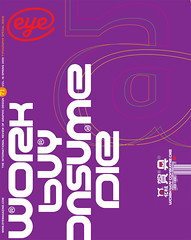Spring 2009
Erotic fantasies of a proto-Goth
Alfred Kubin: Drawings 1897-1910
By Annegret Hoberg<br>Neue Gallerie / Prestel, £30 <br>If you like Roland Topor, the mid-twentieth-century French Surrealist illustrator and visual commentator, you’ll love Alfred Kubin, the early-twentieth-century Austrian proto-surrealist printmaker and satirist. Neither are household names among illustrators and designers today but in the 1970s, when Topor was introduced to Americans through the New York Times op-ed page, Surrealism and Symbolism became the vernacular of graphic commentary. Dozens of illustrators copied Topor’s style, but his work descended from an even more strident artist.
Born in Bohemia, Alfred Kubin (1877-1959) – whose prints and paintings set a standard for nightmarish representation prior to the advent of Surrealism – was known for his illustrations of Balzac, Poe and Dostoevsky. He admired the ghoulish etcher Max Klinger and found aesthetic solace in a mental chamber of horrors. Rather than adhere to the Art Nouveau ornamentation of his time, he revelled in hallucinatory visions, rendered darkly yet with touches of light that gave even his most lugubrious imaginings a curious twinkle. His work was sometimes erotic, and pornographic for his time. His etching Fee (ca. 1901-02), a veiled nude in thong and garter blindly moving through space and time, is disturbingly sensual. Conversely, Elephantiasis (ca. 1900-01), featuring a peculiarly swollen figure with a Gargantuan penis, prompts extreme discomfort. His work runs this gamut from attraction to distraction to revulsion, but all his pieces have a kind of magnetic pull on the viewer.
His political commentary, some of it appearing in Simplicissimus, is Goya-esque in both line and conceptual intensity. My favourite, Der Krieg (1901-02), shows a mammoth Mars, god of war, wearing helmet and shield, carrying a battle axe, his horse-like hoof poised to stamp out a charging army. Although such images have been rendered cliche by frequent abuse, Kubin’s version remains the most powerful of its kind.
This book accompanies a striking exhibition at New York’s Neue Galerie (25 September 2008 – 26 January 2009), but Annegret Hoberg, an expert in German Expressionism, has done a splendid job of bringing Kubin back to the forefront and keeping him there long after the show is gone. Any illustrator who is an exponent of Expressionism, Surrealism, Symbolism and Goth will find it has all been done before – and better.
Steven Heller, design writer and educator, New York
First published in Eye no. 71 vol. 18 2009
Eye is the world’s most beautiful and collectable graphic design journal, published quarterly for professional designers, students and anyone interested in critical, informed writing about graphic design and visual culture. It is available from all good design bookshops and online at the Eye shop, where you can buy subscriptions and single issues.

